Jacket For Kayaking is non negotiable When you’re out on the water, a Personal Floatation Device (PFD) is your best friend.
Your Lifeline on the Water: Understanding PFDs

I’m going to explain why it’s not just a piece of safety equipment but an essential gear that functions like seatbelts for kayakers.
Just like you wouldn’t drive without buckling up, shoving off without a life jacket is a risk you shouldn’t take.
Meeting the Standards: The Importance of AS4758 Compliance
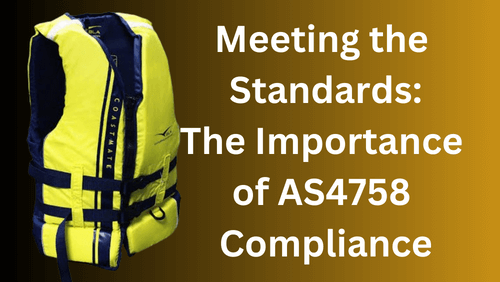
You’re going to find out about the Australian Standard 4758, or AS4758. It’s a set of guidelines ensuring the PFD you trust your life to is up to snuff. Compliance is key, and I’m here to help you identify the markings that signal a PFD meets these rigorous standards.
Decoding the Levels: From ‘Type’ Ratings to AS4758
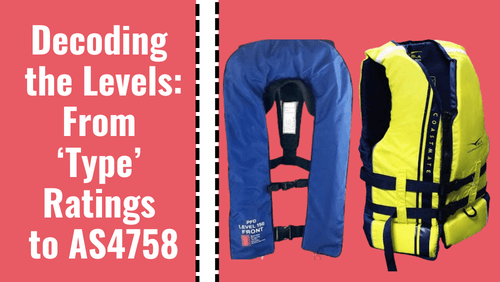
If you want to understand the backbone of PFD safety for kayaking, knowing the shift from ‘Type’ ratings to the current AS4758 levels is crucial.
It can be a bit confusing, but don’t worry too much about it. I’ll break it down for you, providing insights into what these levels mean and how they correlate with the protection you need while paddling.
Making the Right Choice: Safety Over Legality
Now, what’s the big takeaway from all this info on standards and compliance? Choose something that resonates with your need for safety.
This isn’t just about complying with the law; it’s also about ensuring you have the right gear that’s been thoroughly tested for the unpredictable nature of water.
Selecting the Appropriate PFD Type and Level
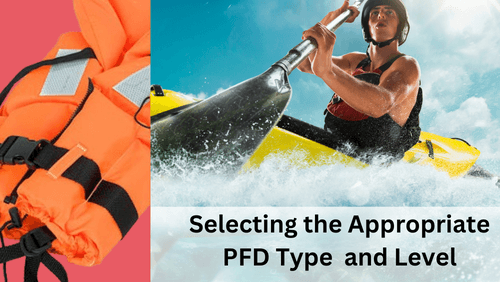
Okay, so you’ve got a handle on the safety standards for PFDs, and you understand why they’re a non-negotiable piece of gear for kayaking.
Now, let’s talk types and levels because selecting the right one isn’t just a matter of personal preference; it’s about tailoring your choice to the type of kayaking you’ll be doing.
Ocean vs Inland: How to Choose the Right Level of Buoyancy
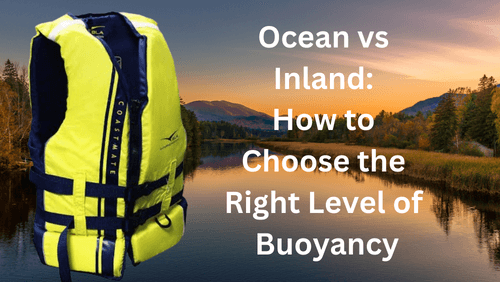
Here’s the deal: if you’re heading out into the open ocean, you’re going to want a Level 150 or Level 100 PFD. These are a bit bulkier, sure, but they’re designed to give you the highest buoyancy and turn you face-up in water, which could be a lifesaver in rough seas.
On the flip side, when you’re planning more laid-back trips, say coastal cruising or floating through inland waterways, a Level 150 down to Level 50 PFD can do the trick.
And for the adventurers among us, there are Level 50 Special Purpose PFDs crafted just for activities like sea kayaking.
Understanding the Levels: What They Mean and How They Relate to Your Kayaking Style
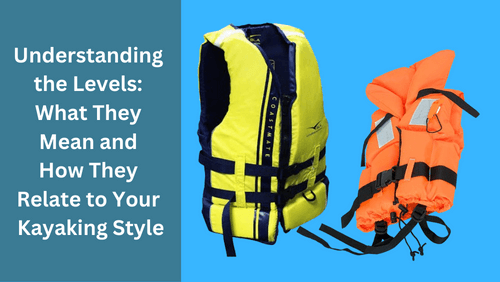
You might be wondering what these levels signify. Well, they’re about buoyancy and intended use.
A higher level means more buoyancy and is generally recommended for more volatile conditions. But don’t think that higher just means better; it also means bulkier, so balance the level of protection with the comfort you’ll need to paddle effectively.
Finding the Perfect Match: How to Align Your PFD Level with Your Kayaking Environment

That’s a lot to consider, I know. But take your time to think about where you’ll be kayaking and match the PFD level to that environment. It’s a move that not only assures your safety but also enhances your kayaking experience.
Getting the Fit Right: Why It Matters and How to Do It
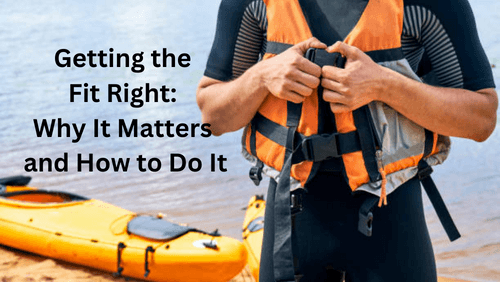
With a solid grasp on the types and levels of PFDs, you’re primed to nail the fit—and that’s key.
A PFD that doesn’t fit right is like wearing shoes two sizes too big; it’s bothersome and, frankly, dangerous. Head to the next section, and I’ll guide you through getting a PFD that fits like it was made just for you.
Ensuring the Perfect Fit for Maximum Safety
Getting the right size is paramount when it comes to life jackets. Just like you wouldn’t wear a seatbelt that’s too loose, you shouldn’t settle for a PFD that doesn’t fit properly.
Sizing Up: How to Measure Yourself for a PFD
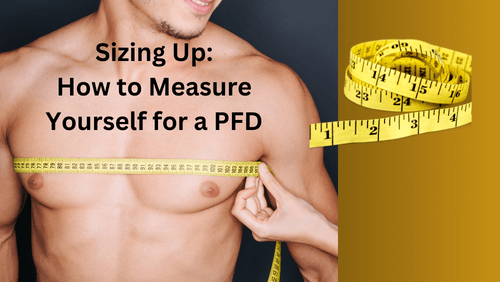
Start by measuring your chest size if you’re an adult or use weight as a guide for children’s life jackets.
Snug but Not Tight: How to Check the Fit of Your PFD
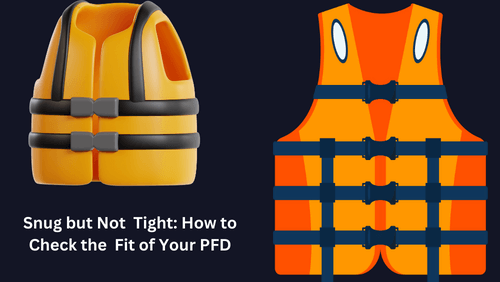
Now, fit is more than just a size label. A life jacket should fit snugly without hampering your paddle strokes or breathing. You’re going to find out that freedom of movement is key in kayaking, so make sure the PFD allows for full motion.
A tip: raise your arms overhead; if the jacket lifts too much, it’s likely too big.
Fine-Tuning: How to Adjust Your PFD for Optimal Comfort

High adjustability is your friend. Look for PFDs with adjustable straps that let you customize the fit. This kind of adjustability can accommodate layers of clothing underneath, which is a plus for changing climates and conditions.
Trying It On: How to Compare Different Brands and Models of PFDs
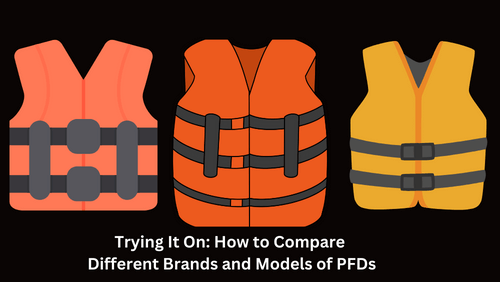
I’m going to suggest trying on several PFDs from different brands, even within the same size class, because sizing can be inconsistent.
During this fitting process, check for any pressure points or restrictive areas that could cause discomfort over time.
Keeping It Fresh: How to Maintain Your PFD for Longevity and Performance
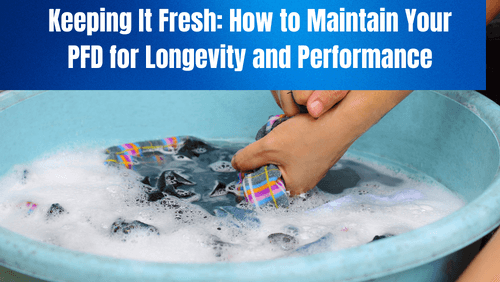
When transitioning into the next section, it’s important to understand that a good fit doesn’t just stop after the purchase. PFD maintenance is crucial for ensuring that snug fit stays constant and that the PFD performs reliably in every kayaking trip.
Maintenance Tips for PFD Durability and Performance
Taking care of your personal flotation device (PFD) is just as essential as choosing the right one. Why? Because a well-maintained PFD ensures your safety on the water.
This isn’t just about cleaning; it’s also about checking for wear and tear. Regularly inspect buckles, webbing, and straps for any signs of damage. I’m going to help you with simple yet effective maintenance tips.
Cleaning Your PFD: How to Rinse and Dry It Properly
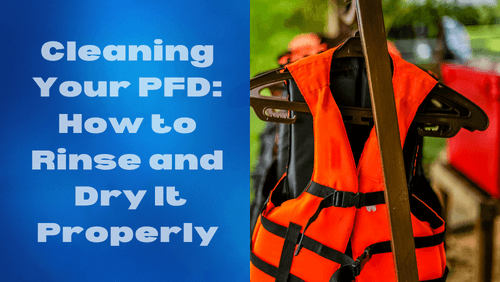
First things first, rinse your PFD with fresh water after each use. Saltwater, sand, and other debris can degrade the materials over time if not cleaned properly.
Make sure to let it air-dry thoroughly, but don’t rush this by using direct heat sources as they can harm the buoyant materials.
Storing Your PFD: How to Avoid Sun and Moisture Damage
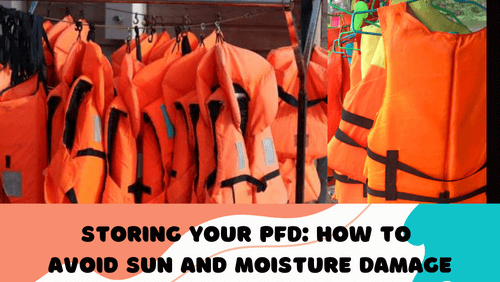
As for storage, keep your PFD in a well-ventilated area, away from direct sunlight to prevent UV damage.
I really hope that you see the value in this; adequate care can significantly extend the lifespan of your PFD, saving you money in the long run and, more importantly, ensuring its reliability when you need it most in emergencies.
Inspecting Your PFD: How to Check for Wear and Tear
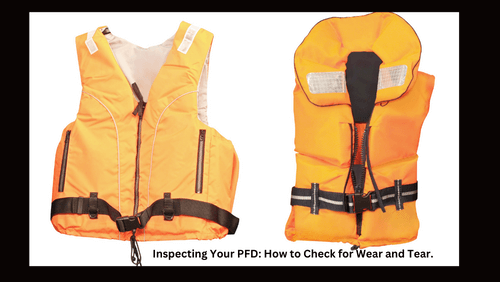
This isn’t just about cleaning; it’s also about checking for wear and tear. Regularly inspect buckles, webbing, and straps for any signs of damage.
Caring for Your PFD: How to Extend Its Lifespan and Performance
And remember, your safety gear is a partner in your kayaking adventures.
Treat it well, and it will do the same for you, providing confidence and security as you enjoy the beauty of open waters.
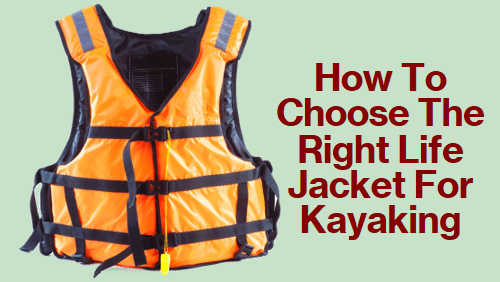
I just finished reading your article on How to Choose the Right Life Jacket for Kayaking. I found the article to be very informative and well written. The layout, with its mix of photos and information, was very easy to read and the photos assisted with the key points in the article. I definitely learned some things about pfd’s that I did not previously know, and will carry that knowledge into choosing my next life jacket (and it may be why I don’t care much for my current one).
I did have a question for you. I read that your information was based on “Australian Standards” and was curious as to how they relate to what the standards would be in the United States. Is there any correlation at all or are they completely different?
Thank you.
Hello Scott!
Thank you for your thoughtful comment on my article about choosing the right life jacket for kayaking. I’m glad you found it informative and well-written!
Now, let’s address your question regarding the Australian Standards (AS4758) and their correlation with standards in the United States. Here’s the scoop:
1. Australian Standard (AS4758):
– As of January 1, 2021, all Australian life jackets used on recreational boats must comply with the **AS4758** standard¹.
– This standard focuses on buoyancy and safety. Life jackets meeting AS4758 are the most buoyant and safest they’ve ever been.
– Under this new system, life jackets are rated based on the Newton measurement of buoyancy. The levels include:
– Level 150: Best for offshore use, replacing the old Type 1 jackets.
– Level 100: Also suitable for offshore use, ideal for near-shore activities.
– Level 50: Recommended for smooth waters, great for kayaking and personal watercraft.
– Level 50S (Special Purpose): Intended for specific situations, without head support.
2. United States Standards:
– In the U.S., life jackets adhere to the U.S. Coast Guard (USCG) standards.
– The USCG categorizes life jackets into different types:
– Type I: Offshore life jackets with the highest buoyancy, similar to Australia’s Level 150.
– Type II: Near-shore life jackets, comparable to Australia’s Level 100.
– Type III: Flotation aids for calm waters, similar to Australia’s Level 50.
– Type V: Special-purpose life jackets, including hybrid designs.
– While the terminology differs, the intent is similar: to keep boaters safe based on their specific needs.
In summary, both Australia’s AS4758 and the U.S. Coast Guard standards aim to enhance safety, but they use different terminology. When choosing a life jacket in the U.S., look for the appropriate “Type” based on your water activities. And remember, safety and comfort!
I enjoyed your article, Martins; I plan on going Kayaking with some friends soon; nothing too challenging, just doing some casual inland cruising. After reading your post, I realized that my PFD is not the correct fit for me, even when I adjusted it properly. Do you have any recommendations for a properly fitting PFD for an average-sized female?
Hello Athina!
Thank you for reading my article, and I’m thrilled to hear that you’re planning a kayaking adventure with friends It’s essential to have a well-fitting Personal Flotation Device (PFD) for safety and comfort on the water.
(As an Amazon Associate, I earn from qualifying purchases.)
For an average-sized female, here are some recommendations for properly fitting PFDs:
1. Onyx MoveVent Torsion Kayak PFD:
– Budget-Friendly: This PFD offers excellent value for its price.
– Comfort: Designed for comfort and mobility during paddling.
– Features: Multiple adjustment points for a customized fit.
– Style: Practical and functional.
– Weight: Lightweight at 1.84 pounds.
2. Stohlquist Women’s Flo Life Jacket:
– Style and Comfort: The Stohlquist Flo is designed specifically for women.
– Fit: Features a multi-panel princess hinge and internally-sculpted bust cup for comfort and support.
– Organization: Well-organized pockets.
– Weight: Weighs 2.9 pounds.
Remember, the right PFD should fit snugly without being too tight. Follow these steps to ensure a proper fit:
1. Sizing: Measure your chest using a sewing tape and compare it to the manufacturer’s sizing recommendations. Weight can also be a factor.
2. Try Before You Buy: Always try on a PFD before hitting the water.
3. Adjustment: Make sure the PFD stays in place and doesn’t slide up around your ears. Tuck away any excess straps.
4. Local Paddling Shop: Visit your local paddling shop to try on different models and find the perfect fit.
Happy kayaking, and stay safe out there!